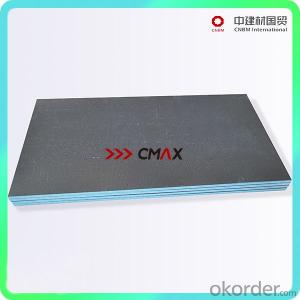Solar Inverter Brands
Solar Inverter Brands Related Searches
100w Solar Panel With Inverter Best Solar Panel Inverter 5000 Series Cast Aluminum Plate Portable Solar Panel Inverter First Solar Series 6 Module 12 Volt Solar Panel Inverter Plastic Solar Lanterns Buy Solar Panel Inverter Solar Panel Inverter Cost Solar Panel Without InverterHot Searches
Type Of Inverter For Solar Types Of Inverter For Solar Used Solar Inverter For Sale Inverter Size For Solar System Solar Edge Inverter For Sale 5kw Solar Inverter For Sale Solar Inverter For Sale Solar Inverter For Battery Solar Inverter For Split Ac Solar Inverter For Laptop Solar Inverter For Fridge Solar With Inverter Price Solar Inverter With 2 Battery Solar Inverter Price In China Best Solar Inverter In China Solar Inverter Price In Dubai Solar Inverter Price In Uae Solar Inverter Price In Kenya Solar Inverter Price In Kerala Solar Hot Water Collectors For SaleSolar Inverter Brands Supplier & Manufacturer from China
Okorder.com is a professional Solar Inverter Brands supplier & manufacturer, offers integrated one-stop services including real-time quoting and online cargo tracking. We are funded by CNBM Group, a Fortune 500 enterprise and the largest Solar Inverter Brands firm in China.Hot Products
FAQ
- Yes, a solar inverter can be remotely monitored and controlled. Many modern solar inverters are equipped with advanced monitoring and communication capabilities, allowing them to be connected to a network and accessed remotely. This enables users to monitor the performance of their solar system, track energy production, and make adjustments or troubleshoot issues from a remote location using a computer, smartphone, or other devices.
- Yes, it is possible to upgrade your existing solar inverter without replacing the entire system. In some cases, you may be able to replace the inverter with a more advanced model that offers improved efficiency or additional features. However, it is important to consult with a professional to ensure compatibility and proper installation.
- When choosing the right brand of solar inverter, several factors should be considered. First, look for a brand with a good reputation and a track record of reliability. It's important to choose a brand that has been in the market for some time and has positive customer reviews. Additionally, consider the warranty and after-sales service provided by the brand. Look for a brand that offers a comprehensive warranty and has a strong customer support system in place. Finally, consider the specific requirements and features you need from the inverter, such as its power output, efficiency, and compatibility with your solar system. Comparing different brands based on these factors will help you make an informed decision and choose the right brand of solar inverter for your needs.
- No, a solar inverter cannot be used with different AC voltage systems. It is designed to convert the DC power generated by solar panels into a specific AC voltage that is compatible with the electrical grid. Using it with a different AC voltage system could lead to compatibility issues and may damage the inverter or the electrical system.
- Yes, a solar inverter can be used with solar-powered electric vehicle charging stations. A solar inverter is responsible for converting the DC power generated by solar panels into AC power that can be used to charge electric vehicles. By using a solar inverter, the solar energy harvested from the panels can be efficiently utilized to charge EVs, making it an environmentally-friendly and sustainable option for charging stations.
- The common troubleshooting steps for a malfunctioning solar inverter may include checking the power supply, inspecting the wiring connections, resetting the inverter, performing a firmware update, checking for error codes or error messages, and consulting the manufacturer's manual or contacting technical support for further assistance.
- Regular maintenance is required for a solar inverter to ensure its optimal performance. This includes cleaning the inverter and its components to remove any dust or debris, inspecting and tightening electrical connections, checking and replacing any faulty or worn-out parts, monitoring the inverter's performance and efficiency, and keeping track of any software updates or firmware upgrades provided by the manufacturer. It is also important to regularly clean and maintain the solar panels and other associated equipment to ensure the inverter's functionality.
- Shading can significantly affect the performance of a solar inverter. When certain parts of a solar panel are shaded, the overall power output of the system decreases. This is because shaded cells create resistive losses, reducing the current flow and overall efficiency of the inverter. Additionally, shading can cause a phenomenon known as the "partial shading effect," where the entire string of panels is affected even if only a small portion is shaded. To mitigate these issues, technologies like bypass diodes are used in solar panels to minimize the impact of shading and ensure optimal performance of the inverter.













































